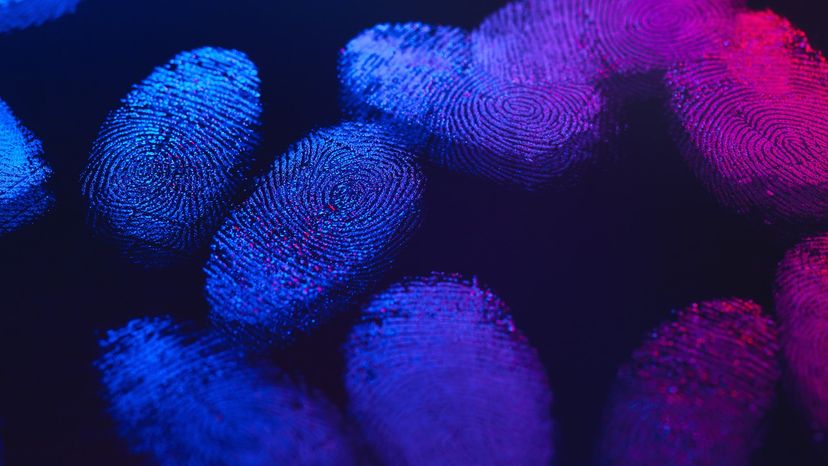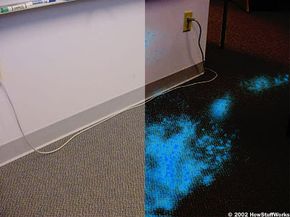If luminol reveals apparent blood traces, investigators will photograph or videotape the crime scene to record the pattern. Typically, luminol only shows investigators that there might be blood in an area, since other substances, including household bleach, can also cause the luminol to glow. Experienced investigators can make a reliable identification based on how quickly the reaction occurs, but they still need to run other tests to verify that it is really human blood.
Luminol in itself won't usually solve a murder case. It's only one step in the investigative process. But it can reveal essential information that gets a stalled investigation going again. For example, hidden blood spatter patterns can help investigators locate the point of attack and even what sort of weapon was used (a bullet makes blood splatter very differently than a knife does). Luminol may also reveal faint bloody shoe prints, which gives investigators valuable information about the assailant and what he or she did after the attack.
In some cases, luminol leads investigators to more evidence. For example, if luminol detects trace amounts of blood on a carpet, investigators may pull up the carpet and discover a lot of visible blood on the floorboards below.
One problem with luminol is that the chemical reaction can destroy other evidence in the crime scene. For this reason, investigators only use luminol after exploring a lot of other options. It is definitely a valuable tool for police work, but it's not quite as prevalent in crime investigation as presented on some TV shows. The police don't walk into a crime scene and start spraying luminol on every visible surface.
For more information on luminol and other forensic investigation tools, check out the links on the next page.



